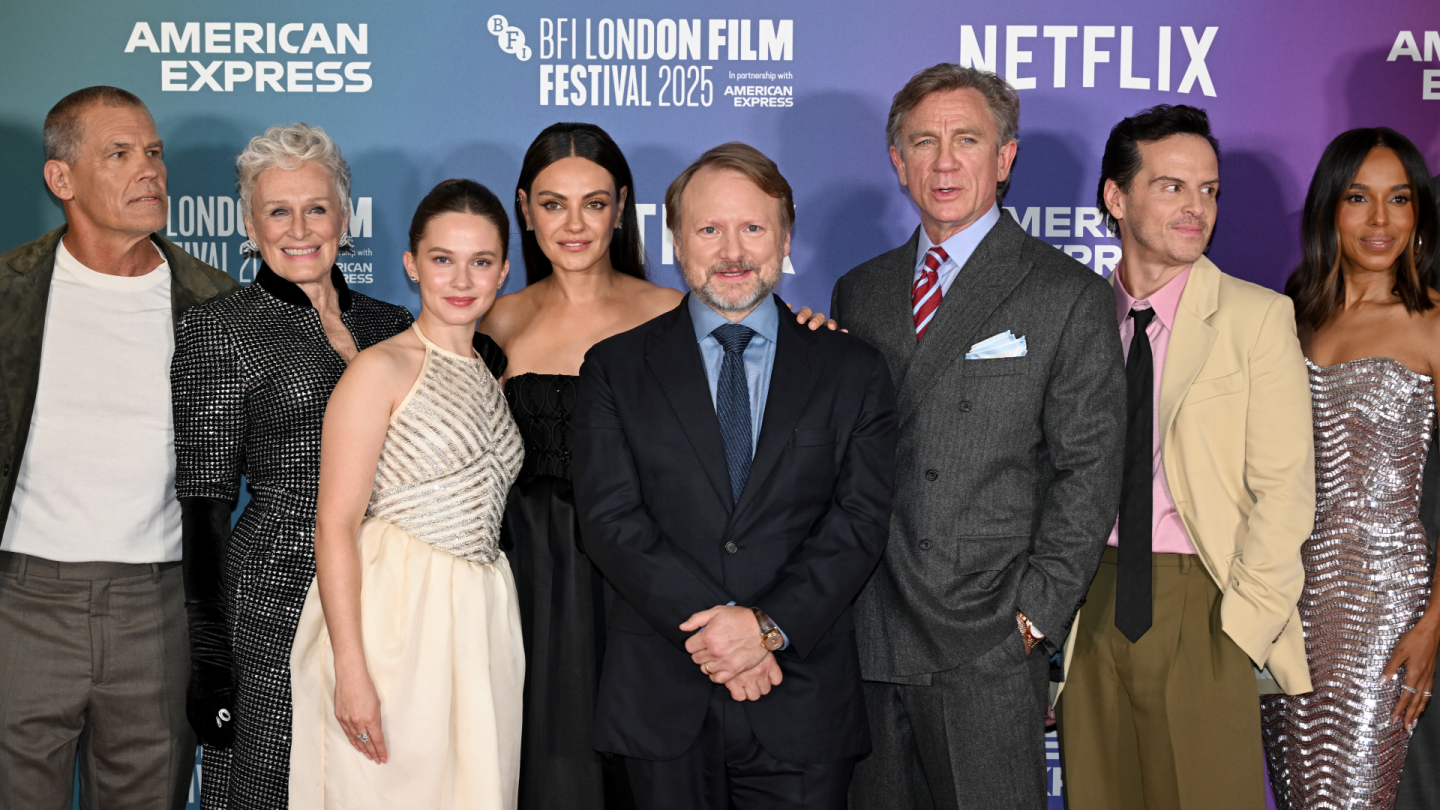3rd November 2025

Or: How We Spent October Watching Other People’s Sets While Pretending Not to Judge
FADE IN: LONDON. OCTOBER 2025. THE SOUTH BANK GLITTERS WITH ANTICIPATION.
The 69th BFI London Film Festival descended upon our fair city like a particularly well-dressed invasion force, armed with 247 creative works from 79 countries and enough celebrity wattage to power a data centre in Park Royal for a year.
From our workshop in North West London, we watched with a mixture of professional pride and barely suppressed glee as the festival transformed the capital into cinema’s temporary headquarters from October 8-19.
The opening salvo came courtesy of Rian Johnson’s Wake Up Dead Man: A Knives Out Mystery, bringing Daniel Craig back to his detective roots – though this time trading martinis for magnifying glasses. The red carpet that night was awash with sequins and swagger: Kerry Washington shimmering in Oscar de la Renta, Mila Kunis in custom Dolce & Gabbana, and Rachel Weisz surprising everyone by showing up in a power suit that made even her husband’s detective costume look underdressed.
But we had our eyes on different prizes.
Two of the festival’s most anticipated films – del Toro’s Frankenstein and Lanthimos’s Bugonia – featured sets we’d worked on. Watching the stars pose in front of festival banners while knowing they’d soon be watching our handiwork on the big screen? That’s a particular kind of anticipation you can’t buy.
Enter Stage Left: A Parade of Stars and Their Increasingly Ambitious Backdrops
The middle act belonged to the heavyweight directors and their visual spectacles. Del Toro’s Frankenstein – starring Jacob Elordi, Oscar Isaac, and Mia Goth – arrived like a particularly stylish monster, all Victorian grandeur and technological terror.
Chloé Zhao’s Hamnet brought Shakespeare into the conversation (Paul Mescal and Jessie Buckley wrestling with tragedy in period dress), while Yorgos Lanthimos reunited with Emma Stone for Bugonia, a darkly funny environmental thriller that had critics buzzing louder than its title might suggest.
George and Amal Clooney graced the Jay Kelly premiere, with Amal in sugar-pink Tamara Ralph Haute Couture that practically required its own lighting rig. Meanwhile, the Moss & Freud screening brought together art and fashion royalty when Ellie Bamber, playing Kate Moss, appeared alongside the actual supermodel – a meta moment that had us wondering about the logistics of recreating Lucian Freud’s famously cluttered studio.
Plot Twist: It’s Not Just About the Glitz
Here’s where our story takes an unexpected turn. Between the champagne flutes and custom couture, the festival revealed its beating heart. Letitia Wright premiered her directorial debut Highway to the Moon. Ahmed Jamal’s Hotel London, first released in 1987, returned with its exploration of homelessness feeling painfully contemporary. The documentary The Travelers followed Cameroonian migrants on their perilous journey to Europe, while One Woman One Bra brought Kenyan filmmaker Vincho Nchogu’s humorous yet moving tale about land rights to international attention.
These weren’t just films; they were architectural blueprints for empathy. Lucrecia Martel’s Landmarks won Best Film for its searing chronicle of native land theft – a documentary that Festival Director Kristy Matheson championed as part of the festival’s commitment to emerging voices and urgent stories.
It was a reminder that while we might build elaborate worlds for del Toro and dystopias for Lanthimos, the most powerful sets are sometimes the simplest ones – those that frame real human stories.
Roll Credits on Another Festival – But the Show Goes On
As the festival wrapped on October 19 with 100 Nights of Hero (Emma Corrin and Maika Monroe bringing fairytale glamour to the closing gala), we couldn’t help but reflect on what we’d witnessed. From our perspective as set builders, every film is ultimately about creating worlds – whether it’s del Toro’s imposing library, Zhao’s Shakespearean England, or the stark reality of a migrant boat crossing the Mediterranean.
The BFI London Film Festival reminded us that behind every great film is not just a vision, but the physical manifestation of that vision. Every elaborately constructed ballroom, every meticulously recreated historical street, every minimalist modern apartment that serves as backdrop to human drama – they all start where we work: in workshops like ours, with sawdust and paint and the peculiar alchemy of turning imagination into something you can actually touch.
FADE OUT: THE LONDON SKYLINE. THE FESTIVAL LIGHTS DIM. THE SETS ARE STRUCK.
But in workshops across London, including ours, the next worlds are already being built. Because if this year’s festival taught us anything, it’s that cinema isn’t slowing down, stories aren’t getting smaller and someone, somewhere, is going to need a beautiful set that can accommodate both Jacob Elordi and a lot of dramatic lightning.
Same time next year?